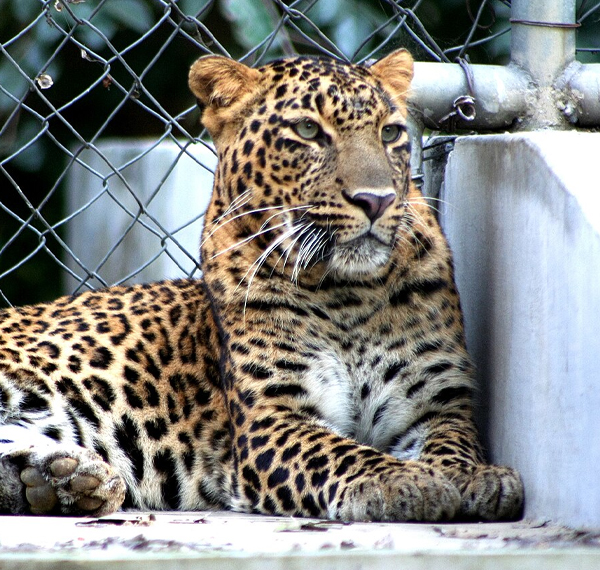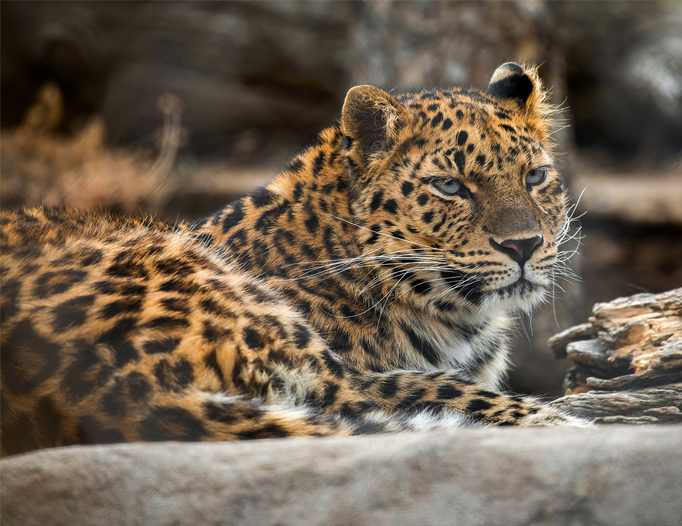Total Weight
Height
Diet
Lifespan
Total Weight
Height
Diet
Lifespan
Leopards are graceful, medium-sized big cats found in Sub-Saharan Africa, Northeast Africa, Central Asia, China, and India. Known for their agility and adaptability, these solitary hunters thrive in forests, grasslands, and mountains, showcasing remarkable camouflage and stealth skills.
The history of leopards at Patna Zoo started in the year 1986 when two wild-captured female leopards named Rangeeta and Tara were received from Hazaribagh Forest Division. In the year 1997, one more female wild leopard named Reena was received from Shahabad Forest Division.
Hyderabad Zoo provided two lions in the year 2007 named Vishal and Saraswati. These two lions bred successfully in the year 2012 and two cubs ‘Samrat’ and Sheru survived.


The leopard enclosure at Patna Zoo is a spacious and naturalistic habitat designed to provide a suitable environment for leopards. It includes rocky outcrops,
conducive vegetation, and climbing structures to mimic their natural habitat. The enclosure is securely fenced to ensure the safety of both the leopards and visitors.
The enclosure also provides shaded areas and platforms for the leopards to rest and observe their surroundings, creating a stimulating and enriching environment for these magnificent big cats.
Additionally, educational signage informs visitors about leopard behaviour, conservation efforts, and their role in the ecosystem. Regular enrichment activities such as food puzzles and scent trails keep the leopards mentally and physically active, promoting their overall well-being and health.
Discover the majestic leopard, a symbol of strength and agility, roaming its natural habitat.
Explore diverse environments and uncover the secrets of one of the planet’s most fascinating and elusive big cats at Patna Zoo."
| Attribute | Details |
|---|---|
| Weight | Male: 30-90 kg, Female: 25-60 kg |
| Height | 45-80 cm at the shoulder |
| Diet | Carnivorous — eats small to medium-sized animals, including antelope, monkeys, rodents, birds, and reptiles |
| Lifespan | 12-17 years in the wild, up to 23 years in captivity |
| Conservation Status | Vulnerable (varies by region and subspecies) |
| Population in the Wild | Population declining — exact numbers vary across regions |
| Social Structure | Solitary, except during mating season or mothers with cubs |
| Unique Behavior | Excellent climbers — often carry prey into trees to avoid scavengers |
| Hunting Pattern | Nocturnal hunters — rely on stealth and ambush techniques |
| Mane Equivalent | No mane — but their beautiful spotted coat provides camouflage |
| Closest Relatives | Other big cats — closely related to lions, tigers, and jaguars |
Leopards are carnivores, meaning they survive by eating meat. They have a highly adaptable diet, feeding on a variety of animals based on what’s available in their habitat. Their prey includes deer, wild boar, monkeys, birds, and smaller animals like rabbits and rodents.
Leopards are also known to hunt livestock, especially in areas near villages, which sometimes leads to conflict with humans. These big cats are ambush hunters, using their excellent camouflage, patience, and speed to silently approach their prey before launching a quick attack.
Leopards are also strong climbers and often drag their prey up into trees to keep it safe from scavengers like hyenas and lions. This tree-stashing behavior helps them eat safely over several days.
In some cases, leopards may scavenge or steal food from other animals if hunting is difficult.
Open Now
All visits to Patna Zoo help fund our work both at the zoo and worldwide.